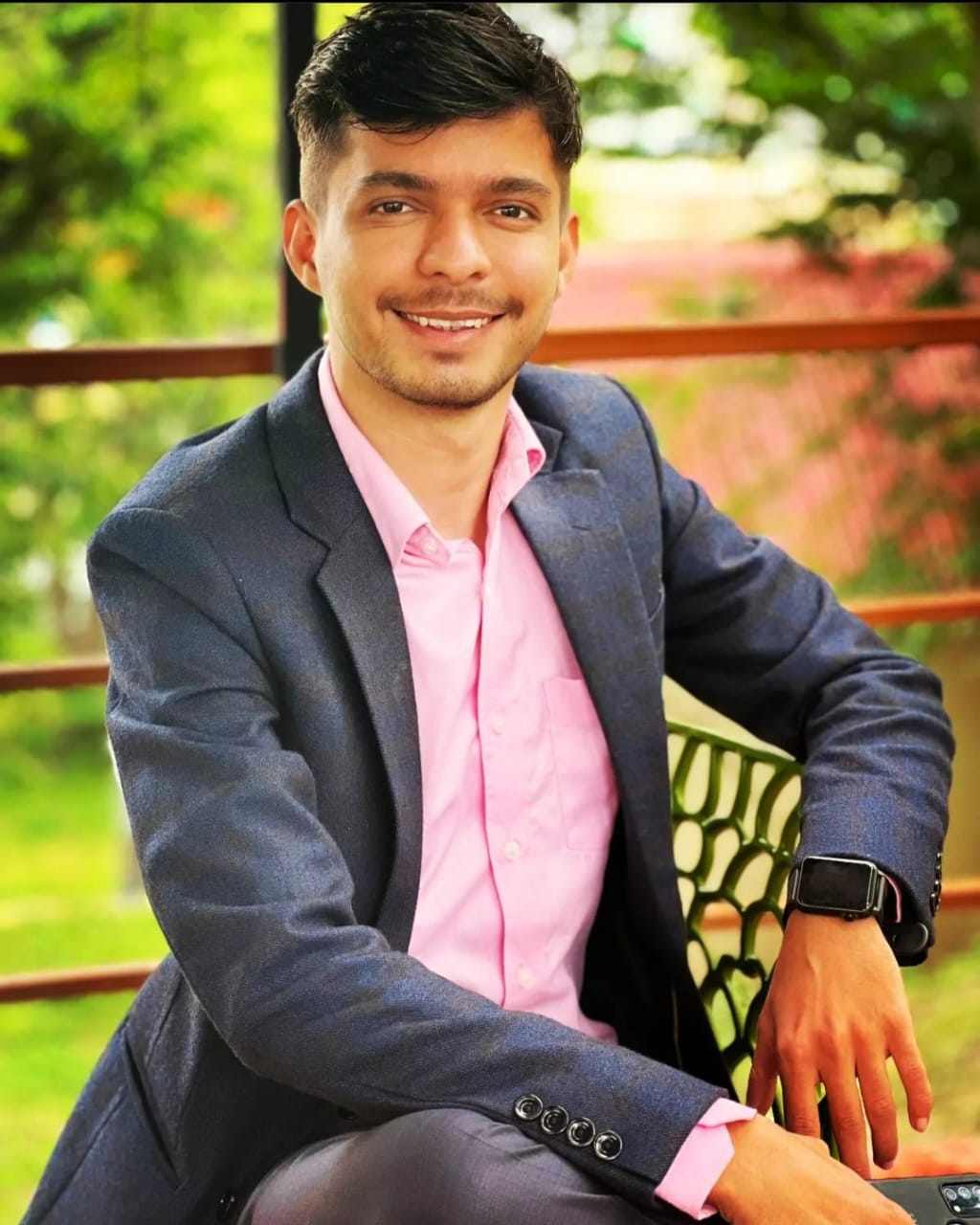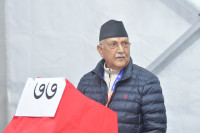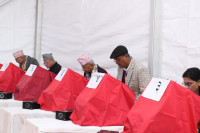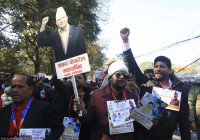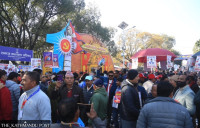Politics
UML faces challenges as ruling coalition fortifies alliance for upcoming polls
Leaders claim the party will emerge victorious on its own. Easier said than done, observers say.
Nishan Khatiwada
With the five parties in the ruling coalition deciding to go to polls under an alliance—they have even started discussing seat-sharing arrangements—the main opposition CPN-UML is finding itself in a tight spot.
Though its leaders are putting up a brave face in public, saying the party will single-handedly defeat the alliance led by the Nepali Congress, challenges remain, if the recent local election results and other developments are anything to go by.
Speaking at a function organised by the party’s Valley Special Provincial Committee in Kathmandu last week, UML chair KP Sharma Oli said his party is capable of garnering a majority in the upcoming elections if party members work in an organised and planned manner.
But that’s easier said than done, observers say.
A section of the UML in August last year walked away to form the CPN (Unified Socialist). Though UML leaders dismissed the splinter as insignificant, the impact was apparent in the local elections.
“In areas where the UML had won with smaller margins in the previous elections, the Unified Socialist can become a major factor to defeat the UML,” said Rajendra Maharjan, a political commentator.
The UML did not fare well in the local polls held in May as compared to the 2017 local elections.
In 2017, the UML had emerged as the largest party after winning 294 units followed by the Nepali Congress with 266 units. The CPN (Maoist Centre) stood a distant third, winning 106 units.
In this year’s local election, the UML won just 206, while the Congress emerged as the largest party with 329 units.
According to the details made public by the Election Commission based on the votes garnered by ward chairs, the UML secured 33.03 percent votes while the Nepali Congress bagged 34.28 percent votes.
Bishnu Rijal, deputy chief of the CPN-UML publicity department, says the party is aiming to garner a majority on its own and that it has not attempted any alliance with other parties as yet.
“However, the door for leaders and cadres of other parties who are willing to join the UML is open,” Rijal told the Post. “We are always welcoming to the leaders and cadres who acknowledge our principles and ideologies.”
Rijal denies that the party split has created any problems.
“The local elections confirmed that the Unified Socialist is not a problem for us,” he said. “However, we are ready to welcome those leaders who got carried away and joined the new party under some kind of pressure.”
In the last general elections, the UML had won 80 seats under the direct election system and 41 under the proportional representation system. The Congress had won 23 seats under the direct system and 40 under the proportional representation system.
There are 165 seats up for grabs for Parliament under the direct election system and 110 under the proportional representation system.
The UML had not split then and it had fought elections under an alliance with the Maoist Centre. The communist alliance made voters tick.
The situation has reversed now.
Under the veneer of the UML boasting, there lies some restlessness, which is apparent from statements of its leaders, say analysts and observers.
“The unnecessary grandstanding is a sign of weakness,” says Maharjan.
CK Lal, also a political commentator and columnist for the Post, agrees.
“A close competition is seen when many political parties are in the fray. That’s why even if Madhav Nepal has brought a small chunk of voters to the Unified Socialist, the split can change the election outcomes in some areas,” Lal told the Post. “Also, except for KP Oli, the party lacks leaders who can woo voters across the country as Madhav Nepal and Jhala Nath Khanal have already parted ways with the UML.”
UML chair Oli, who led his party to victory in the last elections riding on an ultranationalistic plank, is likely to make it an agenda once again, while coupling it with religion and the coalition government’s failure in governance.
According to Lal, Nepal’s returnee migrant workers have an uncanny leaning towards the UML and they make up a good number of voters.
Even though UML leaders say they have not attempted any alliance with any other parties, they could join hands with some parties, including the Rastriya Prajatantra Party, outside the ruling coalition. Upendra Yadav, the chair of the Janata Samajbadi Party, a coalition partner, also had held talks with Oli recently, which was viewed as a collaboration bid for the elections. The Loktantrik Samajbadi Party is wishing to join hands with the ruling coalition, but there has been no clarity yet. If it is not included in the coalition, the UML may reach out to it. Both Janata Samajbadi and Loktantrik Samajbadi are parties with their major vote base in Madhes.
Meena Vaidya Malla, a professor and former chief of the Department of Political Science at Tribhuvan University, says that the UML may have become weaker but it can regain its strength if it can keep its principles, views and vision clear and intact.
“Though the party which once commanded almost a two-thirds majority has now weakened to some extent, it can bounce back if its leaders learn from the past mistakes,” she said.




 9.12°C Kathmandu
9.12°C Kathmandu